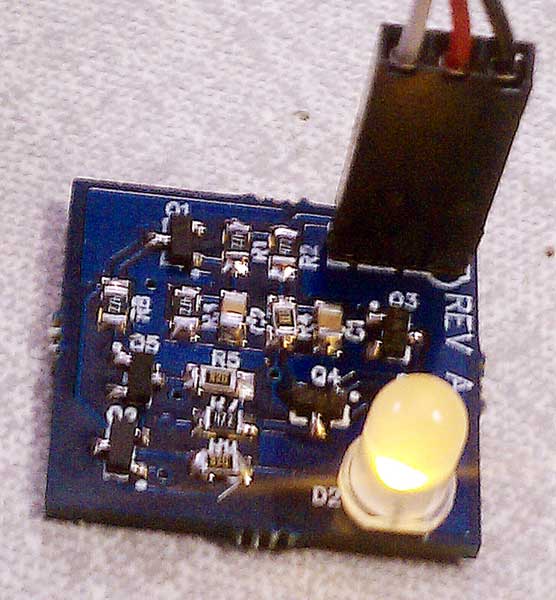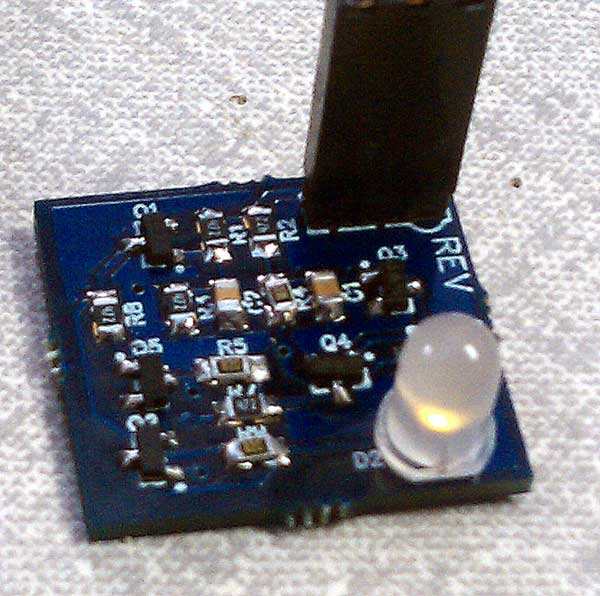1 pin bi-color LED control (solution demo)
So Here is my project. It does everything I wanted it to do.
Using only 1 controlling I/O pin, control a bi-color LED in all three states (on-on-off), and not waste a lot of power doing it, especially when the LED was off.
Here are photos of the completed prototype. I think I ended up spending all of $8 in PCB and parts, and who knows how many hours optimizing the simple H-bridge concept into a low BOM count (relative to other solutions I was coming up with), for the relatively low power need of an LED.



Also attached is a ZIP with the original photographs and a video of the board in action.
Maybe now Beau will post a schematic that does the same thing with 6, no, 5 parts. Let's see...
Using only 1 controlling I/O pin, control a bi-color LED in all three states (on-on-off), and not waste a lot of power doing it, especially when the LED was off.
Here are photos of the completed prototype. I think I ended up spending all of $8 in PCB and parts, and who knows how many hours optimizing the simple H-bridge concept into a low BOM count (relative to other solutions I was coming up with), for the relatively low power need of an LED.
Also attached is a ZIP with the original photographs and a video of the board in action.
Maybe now Beau will post a schematic that does the same thing with 6, no, 5 parts. Let's see...






Comments
The theological implications of this are enormous. I am off to order a bucket of transistors.
But at that volume, they are only a couple pennies each, so it's all good.
I have requested in the past, a simpler version of such a complex execution of an even simpler concept, with no dice. I wouldn't be doing this, except it's fun working with discrete components and I need to control two bi-color LEDs, and only have two pins to do so.
The LEDs in the base circuit don't actually light up (at least they didn't in the operational circuit I built). They're only there to prevent through conduction of the E-B junctions when the input pin is floating. The single resistor limits current to both the bicolor LED and the transistor E-B junctions.
-Phil
1. The forward voltage of the two base LEDs is about 1.6V, satisfying the condition:
2(Vfwd(LED) + 0.6V) > 3.3V
2. With the input floating, there is no measurable current draw from the circuit (using a meter that's sensitive to microamp levels).
3. When the input is either high or low, current draw is about 4.5mA, which represents the bicolor LED's forward current.
-Phil